Introduction
Second time's the charm, right? That's certainly what Xiaomi would have you believe. The second coming of its Android One line is here, but is it any good? You still might not be very used to the concept of pairing Xiaomi hardware with unadulterated Google software - after all, the company's MIUI is one of the heaviest Android skins you can find. But there's no trace of that in the Mi A2, and this device is definitely as intriguing as its predecessor, which was Xiaomi's debut album in the Android One collection.
 |
| Xiaomi Mi A2 long-term review - GSMArena News |
So we have a handset that is unashamedly borrowing looks from other Xiaomi mid-rangers (and is obviously "inspired" in the design of its rear camera island by a company with a fruity name), but it eschews the meme-worthy Snapdragon 625 chipset to go with the more modern and more potent SD660. That seems like a winning combo on paper, especially at this price point. Sometimes though, things that sound good in theory turn out to be letdowns in practice.

That's where this long-term review comes in - to tell you whether Xiaomi has a winner on its hands or not. Despite how obvious the answer to that question may seem, there are always things that can show up when you live with a device for a long period of time, things that can't be anticipated by a spec sheet or that don't come up in our normal, lab test-driven review process.
If you join us over the next few pages you'll find out if the Mi A2 lives up to the huge expectations placed onto its shoulders by die-hard stock Android fans across the globe. We'll tell you what it was like to use every single day as our one and only smartphone for an extended duration that allowed us to both fully appreciate the phone's qualities and become very frustrated with its issues.
Design
The Mi A2 is a mid-range Xiaomi smartphone, and these have all looked quite similar for a while now. It's clear that the same general design language is used throughout the roster, which might help speed up development of new models and cut on some costs. We're not here to argue with that concept, but we will note that there's nothing incredibly impressive about the way the phone looks.
That's not to say it has a bad design. The metal unibody is still used by many devices at this price point, which can't afford to go with the more expensive and heavier glass backs that are so very trendy at the high-end of the market at the moment. Since you get a metal back there's no wireless charging support as these two don't go well together.

If you're looking for a 3.5mm headset jack, here's some bad news - it's nowhere to be found. We aren't going to debate how much sense that makes, but device makers' penchant for removing the port is slowly but surely making its way to mid-range handsets too. You do get a dongle in the box, for what it's worth, and it... works. Of course, if you're a die-hard peruser of wired headsets the sheer inconvenience of not being able to listen and charge the phone at the same time might drive you away from this device, unfortunately.

On the bottom side of the phone there are two grilles, but only one actually has a speaker behind it. The other is there just to house the microphone, and for the sake of symmetry.
Up top you'll notice something that isn't a staple on every smartphone out there - an IR blaster. You can use this to control your electronic devices at home, such as TVs, air con units, DVDs, set top boxes, and pretty much anything that accepts IR input. That's pretty cool and everything works very well with the included Mi Remote app.

Overall, the Mi A2's design isn't revolutionary by any stretch of the imagination but it looks nice and it works. The black model has an understated elegance to it that will feel right at home in any office setting. It also comes with a slightly grippier texture on the back compared to the gold one, and because of that it feels much nicer to touch. However, it does show more fingerprints - though not as bad as glass back phones do.

The build is very solid, with no creaks whatsoever. It's a very slim device and in the hand, it actually seems to be even thinner than it is because of the way the back tapers into the sides.
Display
The Mi A2 manages to be just a tad narrower than the Mi A1 while packing a larger screen. Don't judge the size difference by the diagonal as the Mi A2 has jumped onto the tall 18:9 aspect ratio bandwagon, which is fitting for 2018 but doesn't make it easy to compare to phones with 16:9 screens. The screen surface area numbers paint the more accurate picture: 82.6 cm2 for the Mi A1, 92.6 cm2 for the Mi A2.
Somehow we were spared the notch, and that's something to be praised right now since even cheap(er) phones are starting to sport that 'feature'. On the other hand, the Mi A2's bezels are looking pretty retro even though they've been substantially reduced compared to its predecessor.
The mobile world is currently working to eradicate as much of the bezels as possible at a breakneck pace, and only a few months after its release the Mi A2 already looks a bit dated from this point of view. The fingerprint scanner is on the back, and it's well placed but we can't help wonder why it wasn't built into the bottom screen bezel instead since it's definitely large enough to accommodate such a sensor with no issue.

Xiaomi's Android One phone for 2018 goes with 1080x2160px resolution. That gives you plenty of pixels, especially considering how much the Mi A2 costs. The display has rounded corners because that's trendy.
The panel is very good but not the best we've seen, by a long shot. Indoors it offers plenty of brightness and punchy blacks despite being an LCD, but sunlight legibility isn't its strong suit, to put it mildly. Squinting will be required. Also note that with polarized sunglasses on, the screen is only visible when you hold the phone in landscape orientation - baffling but true, given that most people use their phones in portrait orientation most times.
Long story short: it's a mid-range LCD on a mid-range phone. It's fine but won't win any awards. Its pixel density is high enough that you're unlikely to be bothered by seeing individual pixels, and it gets the job done. Unless you have a device with a top of the line panel right next to your Mi A2, you won't be able to tell the difference.
Two additional things to keep in mind: first, at the moment the auto brightness doesn't learn from your manual adjustments, but that should be coming with the Android 9 Pie update.
Second, the oleophobic coating on top of the screen glass either isn't very good or it isn't there at all. You'll definitely see more oil accumulate faster on it than with other phones. Of course, that's a moot point if you use a screen protector of any kind.
Camera app
The Mi A2's camera app will look quite familiar if you've used any recent smartphone. Camera app design seems to have become very similar regardless of which manufacturer made it. So you get the viewfinder with swipe-able modes, the last of which is Manual if you want to tweak every possible setting before your shot.
You can double tap the power button to quickly launch the camera app. The camera settings aren't that many. If you shoot in anything but the Manual mode you won't even have direct control over the resolution - you can just pick between High, Standard, and Low for Picture quality, and whether you want the frame's aspect ratio to be 4:3, 16:9, or 18:9.

Also in Settings you can toggle the viewfinder gridlines and choose whether to have low light photos automatically enhanced. Though the latter sounds good in theory, we really weren't able to figure out what it does.
Conversely, in the 'More' hamburger menu in the viewfinder you can enable the HHT mode which will take multiple photos in low light and then create a shot with minimal noise by stitching those together - we've seen that feature on many Xiaomi phones already. However, even with this setting manually turned on for every single one of our nighttime camera samples (which you can see below), HHT never actually triggered on our Mi A2 for some reason.
The viewfinder in the app doesn't offer you a 2x zoom toggle even though the secondary rear camera is reminiscent of the one in the OnePlus 6/6T, which does give you that option. Truth be told, it is perhaps better that this was left out since the secondary cam isn't a telephoto unit anyway. As it is, it seems like its role is simply to capture depth information for portrait mode shots and enhance low-light photos... allegedly.
The camera app has been fast and reliable every single time throughout this long-term review process. We've used it for weeks on end and never saw it crashing, freezing, not starting, or anything like that. So while the shots it creates may not be the best in the smartphone world today, at least you know it's always at your disposal to quickly snap something.
Camera samples
The Mi A2 uses the same 12MP main camera sensor as the Mi 8 and Mi Mix 2s (and Mi Mix 3), and this sensor is starting to become the Snapdragon 625 of camera modules in Xiaomi land (if you remember those memes).
The hardware is really only half the story because in this day and age software processing is at least as important in the mobile world. It's become even more so after Google launched its Pixel line of devices that showed the world what can be achieved by focusing more on camera software than hardware, and now every single manufacturer out there is busy improving its processing.
The Mi A2 churns out some nice looking shots during the daytime, which really shouldn't be a surprise. After all, this is a pretty good sensor and we've rarely seen any modern phone camera at this level that struggles with well-lit frames. You can toggle HDR on or off or set it to Auto in which case the phone will decide when it's needed and employ it. For all of our samples, HDR was on Auto.
While the A2's color rendition isn't 100% accurate, it does result in pleasing images though the images don't always have the pop and vividness we expected of the scene.
Detail is good and noise levels are generally low. Dynamic range is okay, but could have been better.
Switching to low light scenes, the Mi A2 does a decent job, but the quality does go down compared to very well lit shots, as you'd expect. Still, there are good amounts of detail in these pictures and no big loss of color or saturation. Photos are generally well exposed, but OIS would have been nice to have in order for blur not to become an issue even with a bit of camera shaking while capturing.
The Portrait mode produces quite convincing bokeh scenes with both humans and non-humans at a variety of distances.
Selfies are good in daytime, and for night shots there's an LED flash on the front that you can turn on for some additional lighting - which you probably should as the flash-less pictures don't come out great, as our samples below can attest (all taken with flash off).
Xiaomi does portrait mode with one sensor on the front camera, and the output is... usable, but perhaps only for social media sharing. If you zoom in at all you will quickly notice that edge detection isn't that good, and that results in some blurriness around the contour of the face.
Overallр the cameras on the Mi A2 are definitely very good for its price point, with selfie portraits being the only really disappointing part of the package. We've seen slightly better camera performance from phones such as the Xiaomi Redmi Note 5 AI Dual Camera and Redmi Note 6 Pro.
Android One
The promise of Android One is that it delivers a software experience that looks pretty much like what you'd see on a Pixel, but you get it in a mid-range smartphone that's made by another company and not Google. That sums up the Mi A2 pretty nicely, but there are caveats.
Let's start with the good stuff, though. The UI you see on this phone is, for most people, indistinguishable from what you'd get on a Pixel. There are subtle differences here and there, but most of those can be attributed to the fact that you're not likely to find a Pixel still running Android Oreo. More on that later.
The launcher, the app drawer, the Settings menu - everything just gives off a 'stock Android' vibe, that is, if you adhere to the definition of that being whatever Google thinks Android should look like (let's not get into whether AOSP is actually 'stock' or not). Everything is nice and clean, and Xiaomi has only added one Settings item - Mi Services - which relates to collecting anonymous usage data.
The other Xiaomi things you'll find are a few pre-installed apps: Feedback (which is self-descriptive), File Manager (which duplicates Google's Files but actually has much more functionality than that bare bones app), Mi Drop (used to quickly send files to another device), and Mi Remote (which is what you want in order to use the IR blaster on the handset). That's it, the entire amount of non-Google 'bloatware'. We'd call every single one of these apps pretty useful given what they do, so we weren't tempted to uninstall any of them. Oh, and technically the Camera app is Xiaomi's too, but that's unescapable since the Google Camera app is proprietary and not shared with the companies making Android One phones.
Aside from that, it's as if you bought this phone straight from Google, with the same list of apps showing up when you first turn it on as on a Pixel. This all makes for a very clean user experience indeed, but it's an experience you had on a Pixel up until August. That's when Android 9 Pie got released, and despite Android One's promise of fast updates, the Mi A2 still runs Android 8.1 Oreo.
The first reports of the Android Pie update seeding to users came in a couple of days before this review was published and our review unit still doesn't have it so this review is based entirely on Oreo.
Speaking of updates, security patches are coming in, so that's a plus for the Mi A2 and the Android One program in general compared to how mid-rangers that aren't part of it are generally treated by most Android device makers. The Mi A2 is currently on the November 2018 security patch level, so all is good on this front.
We struggle to add anything more to this section because Android One is, in essence, 'stock Android', so that is exactly what you're getting. People who enjoy having gazillions of options in Settings for every possible thing will be disappointed, and so will fans of Xiaomi's MIUI because the software on the Mi A2 is as far removed from that as it can be. On the other hand, if you like your software experience clean and Googley, you will love the system that the Mi A2 boots.
Performance
Here's where you enter an uncanny valley type of situation. You get a device with software that looks like it's straight from Google, so you might be tempted to expect Pixel-level performance, but the Mi A2 does not deliver that. This probably shouldn't be very surprising if you take another look at how much you paid for this handset, or even glance at its spec sheet one more time.
Then again, the Snapdragon 660 chipset that it employs is billed as upper-midrange by Qualcomm, so while it naturally can't match the 8-series SoCs in terms of raw performance, for most things in day to day use it should be pretty close. In the Mi A2, however, it isn't. Don't get us wrong, a 4-series Snapdragon would've been worse, clearly, but the 660 here is a bit of a letdown. Or who knows, maybe it's not the silicon but the software optimizations - or lack thereof. We're willing to wager that Google does a lot more of that for its devices than it or Xiaomi did for this one, which, again, might be understandable given the price.

It's up to you to decide whether you can live with this situation but do keep in mind that the Mi A2 does not feel as fast as any flagship smartphone released in the past couple of years. While that's logical for very heavy use case scenarios, it's true even in day to day operation. It's usually not much slower, sure, but then we've seen quite a few small freezes and stutters throughout the day - any day.
There's also a bit of lag when you switch between apps or sometimes even when you scroll inside an app - depending on how heavy it is, and how much stuff is going on in the background at the same time.
This is a phone that won't be a joy to use for other things while it's updating a bunch of apps, for example. But, if you do keep that in mind, also know that its light software does help it punch ever so slightly above its weight in performance when compared to other phones that cost about as much. The difference isn't huge, though, and we were honestly expecting it to be bigger given the 'holy grail' of 'stock Android' paired with very good specs for a mid-range device.
Smoothness
The Mi A2 is a decently fast and smooth handset for the price, but it can't hold a candle to any recent smoothness champion. Never mind the Pixels, pretty much any flagship device from any maker beats it. But - the Mi A2 isn't a flagship. That has to be kept in mind when evaluating it for a possible buy - if you're expecting top of the line performance and smoothness from a phone that is this cheap, then your expectations are definitely unrealistic.

Mid-range smartphones have definitely become much better today than they ever were, which means they're much more easy to recommend to people, but there are a few reasons why flagships are more expensive, and one of those has to do with how smooth of an experience some of them deliver.
That said, compared to other mid-rangers, the Mi A2 certainly holds its own in the smoothness realm and even beats some handsets running heavy skins atop the OS. Just don't expect too much of it. Micro-stutters are everywhere, small lags are something you'll encounter on a day to day basis, and scrolling sometimes feels weird because the touch latency seems to be pretty high on its display.
Battery life
The Mi A2's battery endurance seems to have improved by quite a lot after the October 2018 security update - and that's yet another reason why you should install these as soon as you get them, sometimes they pack in other optimizations too. With this in mind, we'll only discuss our experience after we applied said update.
Putting just a 3,000 mAh battery in this phone to make it this thin is one of those decisions we really can't wrap our heads around, especially since it left the Mi A2 with the biggest camera hump we've ever seen. But the small cell does do an admirable job of keeping the lights on, and the phone's numbers may positively surprise you.
In our use - with 12-16 hours off the charger in any day, while being connected to Wi-Fi for most of that and an hour or two of 4G, Bluetooth always on with an hour or two of streaming music, and location services always on - we've constantly seen at least 4 hours of screen on time. The record was 5 hours and 27 minutes with 35% battery left. Had we let it go all the way down to 0, that means we could've achieved over 7 hours of screen on time, and this is right up there with the best performers in the Android world.
However, do note that battery stats will vary widely based on your particular usage of a device. If you are on mobile data most of the day, the numbers go down. If you're in an area with patchy signal, they'll go down even more. If you use the GPS a lot (for, say directions via Google Maps), they will fall even further. So don't take this as gospel, just note that we were happy with the Mi A2's battery life, impressed even with what it got out of just 3,000 mAh - although a 3,500 or even 4,000 mAh battery could have made this one of those phones you only need to charge once every two days. Maybe that's in store for the Mi A3.
Frustrations, niggles, annoyances
We'll start off this section by mentioning the obvious - it's a metal phone so it's slippery. There's no getting around this. The glass front is obviously slippery too, but nowhere near as much as the back. The black model is less slippery than the gold one because of its texture, but you'll still want to be careful not to accidentally have it slide out of your hand.
The fingerprint sensor is accurate if you make sure you press all the sides of your finger against it when you enroll it. However, while it is generally fast, sometimes it can take about a second to see the home screen, even 1.5 seconds at the worst of times. We've definitely used faster and more reliably speedy fingerprint sensors recently, but this one is by no means slow - it's just not up there with the quickest ones in the business. Then again maybe it isn't the sensor itself that's slow, but the software - we'll never know unless this gets radically improved after a software update. Again, this review is based on Android 8.1 Oreo.

The Mi A2 has one very odd design choice - it's very thin but with a huge camera bump that isn't even centered on the back. Typing while the phone is lying on a flat surface is not something that should be attempted, unless you enjoy the sound of wobble. And wobble it does, a lot. We can't remember another recent handset with a similar amount of wobble. There's a slim transparent case included in the box, and if you use that then the situation becomes slightly more bearable, but even that doesn't fully get rid of the hump.
This brings us to a rather obvious question - why couldn't Xiaomi just have made the phone thicker? That would've allowed it to incorporate a higher capacity battery and the camera island would've been flush with the rest of the back. Win-win, right? It's not like it already has ample milliamperage - 3,000 mAh isn't all that much and Xiaomi itself uses 4,000 mAh cells in other smartphones without them being too thick.

Next, we need to talk about the proximity sensor. Depending on how you use your phone, this might be anywhere from a minor annoyance to a huge design flaw, because it's placed quite far from the earpiece. From the edge of the sensor to the left edge of the earpiece we measured almost 1.5cm, and from the center of the sensor to the center of the earpiece it's 2cm. In your average smartphone this is more like 0.5cm to 1cm. Why is this important? Two words: phone calls. The whole point of the proximity sensor is to turn the screen off when you're in a call - so that your face or ears don't inadvertently trigger touch events on the display.
Depending on how you hold the phone to your ear, how well you want to hear the person you're talking to, and possibly even the shape of your ears and face, the experience of using the Mi A2 for phone calls might be the most frustrating one you've had in a very long time. This happened to us a lot: the screen turned on at random points while on a call and then the fun began. Once we ended a call, we'd often find the blue light filter or the flashlight activated (we had them as quick settings), the notification area pulled down, random apps started, and so on. All of this occurred because of those inadvertent touch actions triggered by the ear or the face.

It definitely doesn't help that the software is pretty slow to respond to the sensor's output, with every change of state it takes a bit for the OS to actually do what it's supposed to, which is turn the screen on or off. You can see just how slowly the switching occurs by covering the sensor with your finger while on a call, when the phone isn't to your face. The sensor is the leftmost, easier to spot on the color versions that are white on the front. If you have one with a black front, know that the position of the sensor is identical, you just can't see it.
If you don't take many calls and you prefer texting, this will not impact you to such a degree. Or maybe you are willing to put in the time and rehearse holding the phone in a mirror - towards the end of the long-term review period we realized that if we pressed on the back of the phone in the area corresponding to where the proximity sensor is on the front, we'd get way less screen turn-ons and random touches while on calls. But be advised - there's little tolerance here. Move the phone even by a few millimeters during the call, or press less hard on it, and you're back to inadvertent screen touch hell.
Next, here's a quick nitpick that's Google's fault and not Xiaomi's: the Mi A2 has rounded screen corners, but most of the time you'll only see the upper ones, because the navigation bar at the bottom has a black background. For the love of all OCD sufferers, it would've been nice if the upper part of that bar would be curved so as to emulate having curved screen corners right above it. Symmetry can be cool, but you're not getting that here.

Now let's move on to the notification LED. It's located in the top bezel of the screen, toward the right. The LED is white and can be quite annoying because it doesn't just have two modes of operation when it blinks - on and off. Instead, it does a crescendo blink thing, where it slowly grows its intensity through 4-5 different light levels.
That would be better if it was a smooth transition from one to the next, but it isn't. Oh, and you can't turn off the LED notification for low battery, so you're going to see this every time you go below 15%. It might not bother you at all, but we find it very distracting, and its maximum lighting level is a bit high for our taste. A notification LED should be seen, yes, but this one goes past that and can be too bright.

Finally, let's address the elephant in the room. Well, one of two actually, but the lack of a 3.5mm headset jack was covered in the Design section. Another thing that's missing from the Mi A2 is NFC. This is quite a big omission if you live in a country where mobile payments are a thing - and they're definitely starting to pick up some steam worldwide, so it's no longer just a bunch of territories where that's available.
Whether you want to use Google Pay (if that is working in your country) or your bank's mobile app (if it enables mobile payments), you're simply out of luck with the Mi A2. This is clearly a cost-cutting measure on Xiaomi's part, and it may not be a huge issue in some places (like India where you can use UPI without NFC), but for other markets like pretty much the entirety of Europe it's an odd thing to leave out.
Conclusion
We don't usually put mid-rangers through the long-term review process, and for a good reason - they generally don't elicit the same amount of interest from you as flagships do. But the Mi A2 (like the Mi A1 before it) is a big exception. We assume it's the pairing of Xiaomi hardware and pricing with Google software that caught everyone's attention, so we wanted to give you an honest assessment of what it's like to live with the Mi A2 every day for many weeks on end.
Hopefully this review doesn't read as a hatchet job, despite the many shortcomings it lists. We just think it's worth knowing everything, even small details, about a phone, before you go ahead and commit to buying it. Most things might not matter to most people, but then some could be deal breakers. Every person is unique in what they expect from a smartphone, and we want to bring as much info to the table as possible so you can make your own informed decision.

With all that said, the Mi A2 definitely isn't a bad phone. Compared to the Huawei Mate 10 Lite which was also a mid-ranger in a long-term review many months ago, it's miles ahead, and these two can still be found on sale for very similar prices even today. Seriously, there's no contest here. On the other hand, compared to any top of the line device, with or without 'stock' Android, the Mi A2 obviously falls short.
That's okay, though, because it costs about a third as your average 2018 flagship. And this was perfectly clear right from the start: the price is one of this handset's main features. That, along with the software, the decent cameras, and Xiaomi's reputation for putting together very good hardware, are what the Mi A2 is all about. Add to that the surprisingly good battery life from such a small cell, and this is the package you're getting.
Although it's definitely not perfect, it might just be for you. That is if you're looking for an affordable phone that runs stock Android, has decent but not earth-shattering performance, comes with pretty good cameras for its price, and is offered by a company that made its name in releasing devices that are cheap and good.
On the other hand, if you want a very smooth software experience, performance on par with high-end devices, and a better camera, well, unfortunately, you're going to have to shell out more cash. As much as the mid-range space of the mobile world has evolved in the past few years, it's still not on up there with the high-end in these regards. And in a way it makes sense - otherwise. it wouldn't be mid-range. The key takeaway is this: if you want flagship-grade everything, get a flagship (or, ahem, a 'flagship killer'). If not, then the Mi A2 is a very good mid-ranger that could be great for you if you can live with its shortcomings.






















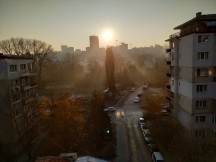
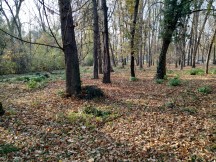
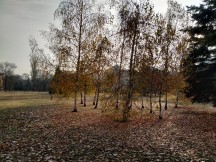
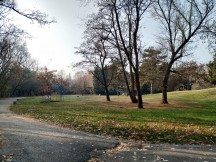
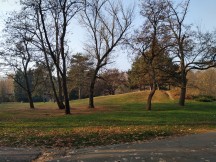
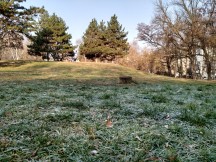

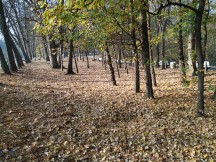

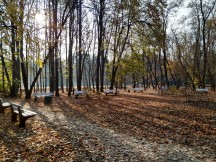

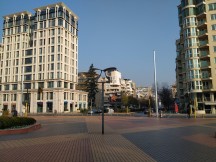





























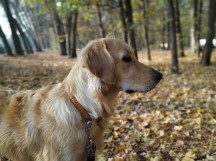

























0 Comments